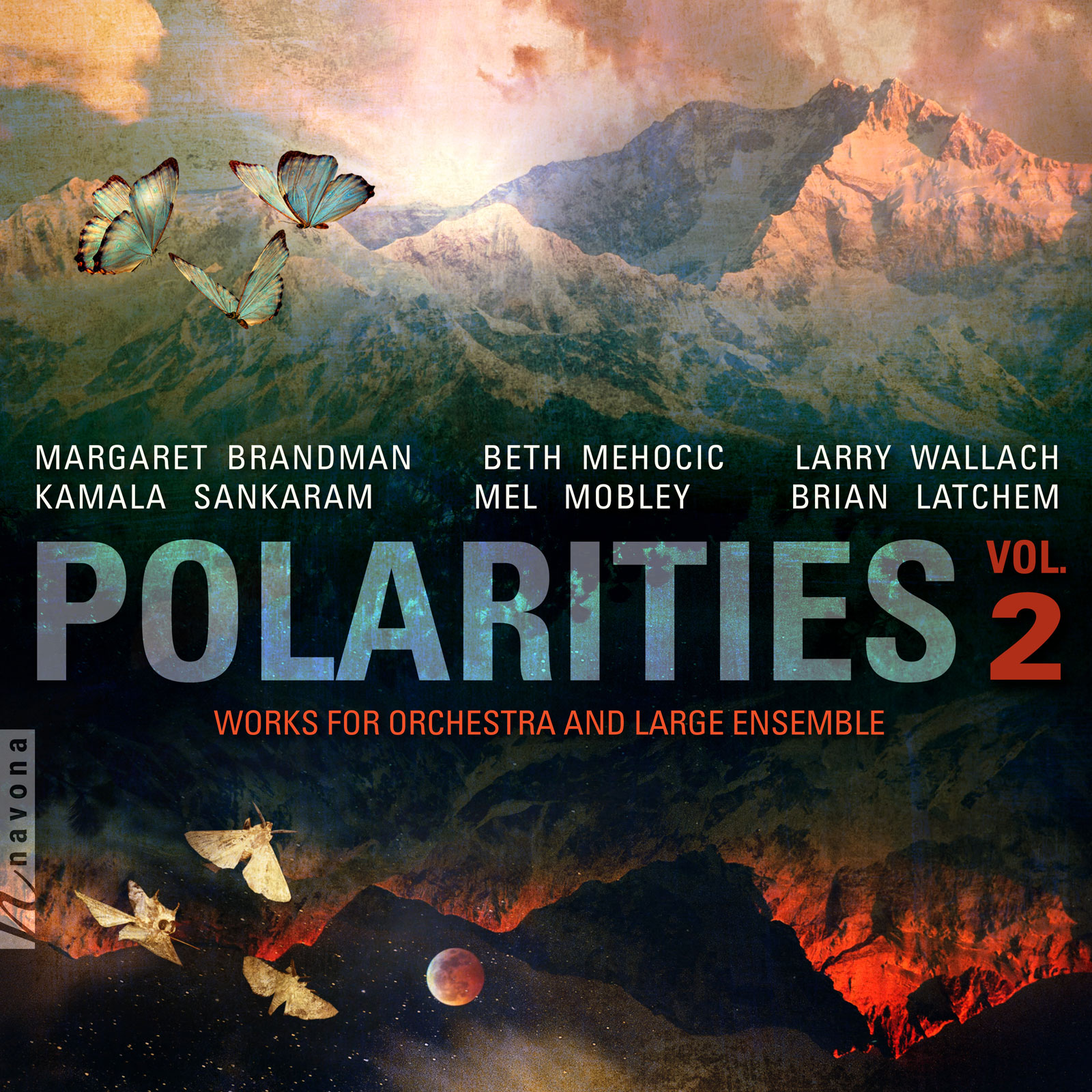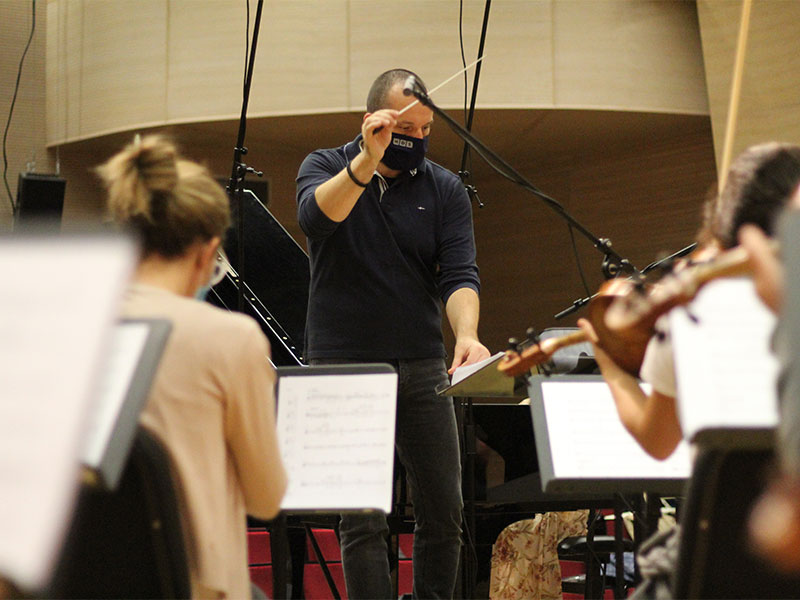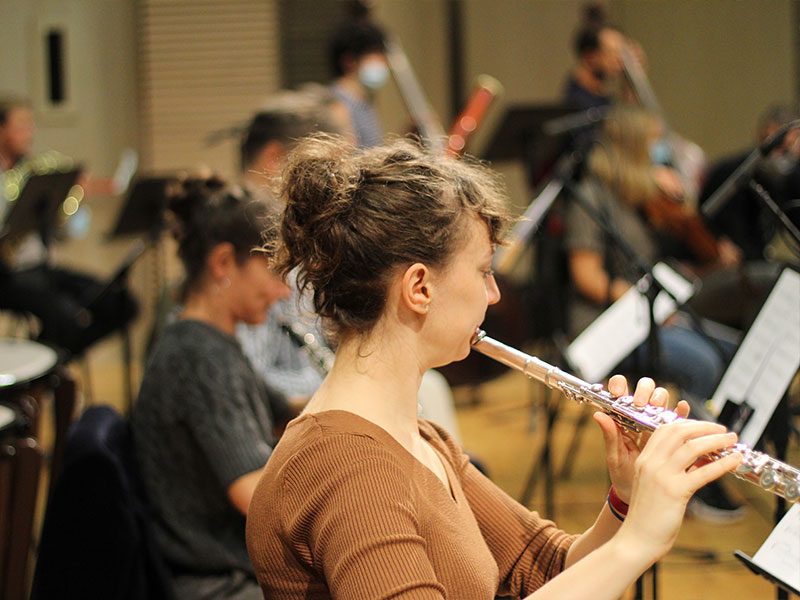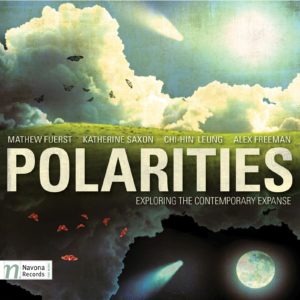Polarities Vol. 2
Margaret Brandman composer
Brian Latchem composer
Beth Mehocic composer
Mel Mobley composer
Kamala Sankaram composer
Larry Wallach composer
From yin and yang to public debate, much in the world revolves around opposing forces. POLARITIES VOL. 2, an album of new presentations in classical music, documents the intricacies of these forces, expressing the emotions, sensations, and scenes associated with the extreme ends of conversation and change.
Like a series of magnets, the album’s six works are united in lockstep by the Moravian Philharmonic, Janáček Philharmonic, and Zagreb Festival Orchestras’ deft ability to unite pieces in different styles: Margaret Brandman’s dynamic Spirit Visions, a journey through mystic moods that ends in elation; Beth Mehocic’s Tango Concerto, an elaborate dance between piano and accordion/bandoneon; Larry Wallach’s Species of Motion, a transforming and pulsing work of shifting imagery; Kamala Sankaram’s 91919, a palindromic work that reverses at its sonic center; Mel Mobley’s Labored Breathing, an illustration of the contrast between breaths of life and death; and Brian Latchem’s Suffolk Variations for Viola and Strings, a conversational back-and-forth between forms.
Listen
Stream/Buy
Choose your platform
"colorful, translucent, robustly performed sounds"
An Inside Look
Margaret Brandman – Spirit Visions
Track Listing & Credits
| # | Title | Composer | Performer | |
|---|---|---|---|---|
| 01 | Spirit Visions (Version for Orchestra) | Margaret Brandman | Moravian Philharmonic Orchestra | Pavel Šnajdr, conductor | 7:48 |
| 02 | Tango Concerto: I | Beth Mehocic | Zagreb Festival Orchestra | Ivan Josip Skender, conductor; Charlene Farrugia, piano; Franko Božac, accordion & bandoneon | 4:37 |
| 03 | Tango Concerto: II | Beth Mehocic | Zagreb Festival Orchestra | Ivan Josip Skender, conductor; Charlene Farrugia, piano; Franko Božac, accordion & bandoneon | 4:37 |
| 04 | Tango Concerto: III | Beth Mehocic | Zagreb Festival Orchestra | Ivan Josip Skender, conductor; Charlene Farrugia, piano; Franko Božac, accordion & bandoneon | 4:34 |
| 05 | Species of Motion | Larry Wallach | Janáček Philharmonic Ostrava | Stanislav Vavřínek, conductor | 11:08 |
| 06 | 91919 | Kamala Sankaram | Zagreb Festival Orchestra | Natalia Anikeeva, viola; Ivan Josip Skender, conductor | 10:57 |
| 07 | Labored Breathing | Mel Mobley | Janáček Philharmonic Ostrava | Stanislav Vavřínek, conductor | 8:52 |
| 08 | Suffolk Variations | Brian Latchem | Janáček Philharmonic Ostrava | Stanislav Vavřínek, conductor; Vladimír Bukač, viola | 9:32 |
SPIRIT VISIONS
Recorded September 15 2020 at Reduta Concert Hall, Olomouc, Czech Republic
Session Producer Vít Mužík
Session Engineer Jan Košulič
Editing & Mixing Lucas Paquette
TANGO CONCERTO
Recorded October 18, 2020 at Blagoje Bersa Concert Hall in Zagreb, Croatia
Session Producer Krešimir Seletković
Session Engineer, Editing & Mixing Jan Košulič
Orchestra Director Ivana Hauser
Orchestra Manager Tin Matijević
SPECIES OF MOTION
Recorded December 7, 2020 at Dům Kultury města Ostravy (The Ostrava House of Culture) in Ostrava, Czech Republic
Session Producer, Editing & Mixing Jan Košulič
Session Engineer Jana Jelínková
Assistant Engineer Mikhail Pavlov
91919
Recorded October 18, 2020 at Blagoje Bersa Concert Hall in Zagreb, Croatia
Session Producer Krešimir Seletković
Session Engineer, Editing & Mixing Jan Košulič
Orchestra Director Ivana Hauser
Orchestra Manager Tin Matijević
LABORED BREATHING
Recorded December 8, 2020 at Dům Kultury města Ostravy (The Ostrava House of Culture) in Ostrava, Czech Republic
Session Producer, Editing & Mixing Jan Košulič
Session Engineer Jana Jelínková
Assistant Engineer Mikhail Pavlov
SUFFOLK VARIATIONS
Recorded June 3, 2020 at Dům Kultury města Ostravy (The Ostrava House of Culture) in Ostrava, Czech Republic
Session Producer Jan Košulič
Session Engineer Jana Jelínková
Editing & Mixing Lucas Paquette
General Manager of Audio & Sessions Jan Košulič
Recording Sessions Director Levi Brown
Audio Director Lucas Paquette
Mastering Shaun Michaud
Executive Producer Bob Lord
Executive A&R Sam Renshaw
A&R Director Brandon MacNeil
A&R Quinton Blue, Mike Juozokas, Danielle Lewis, Chris Robinson, Morgan Santos
VP, Design & Marketing Brett Picknell
Art Director Ryan Harrison
Design Edward A. Fleming
Publicity Patrick Niland, Sara Warner
Artist Information
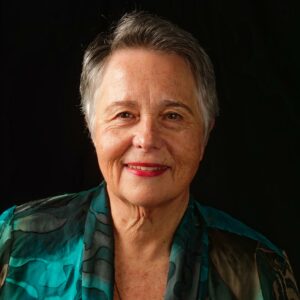
Margaret Brandman
In a career of over 50 years, award-winning composer, pianist, and recording artist Margaret Brandman has followed her passion to create appealing music with strong melodic content, sensitive harmonies, and rhythmic ingenuity. Her output includes works for orchestra, chamber ensembles, choir, solo voice, and solo instruments, composed across a wide range of genres from Contemporary Classical to Jazz and Latin-American.
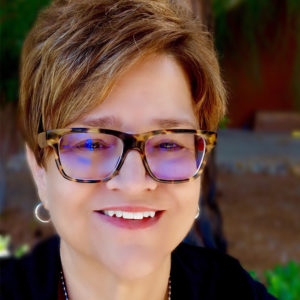
Beth Mehocic
Dr. Beth Mehocic was the Composer-in-Residence, Music Director, and Full-Professor for the Dance Department at the University of Nevada, Las Vegas, and wrote over 100 works for orchestra, concert band, chamber music, dance ensembles, theater, and film. Her works have been performed throughout the United States, Japan, China, Korea, and Europe, and she had works performed in several Las Vegas Hotels including The Mirage, Caesar’s Palace, and the Las Vegas Hilton. Several of her works have been recorded for PARMA Recordings.
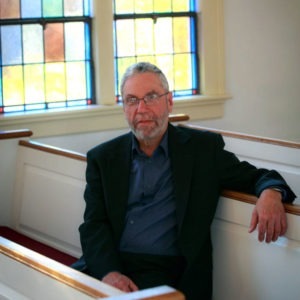
Larry Wallach
LARRY WALLACH is a composer, pianist, and musicologist whose compositions, mostly of chamber music, have been performed throughout the United States. He was educated at Columbia University, from which he holds a PhD in Musicology. He currently holds the Livingston Hall Chair in Music at Bard College at Simon’s Rock, where he has taught since 1972. From 2001 to 2014 taught composition in the Bard MFA Program for Conductors. He received an NEH Fellowship to study historical piano performance practices for the year 1977-78 and is a recipient of two “Meet the Composer” grants from New York State. His composition “Echoes from Barham Down” for flute, string trio, and piano, based on an English country dance tune, won the New School of Music, Cambridge, composition prize in 1985.
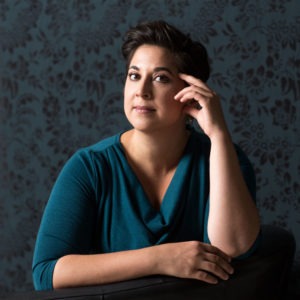
Kamala Sankaram
Praised as “strikingly original” (NY Times) and “new voice from whom we will surely be hearing more” (LA Times), Kamala Sankaram writes highly theatrical music that defies categorization. Recent commissions include the Glimmerglass Festival, Washington National Opera, Houston Grand Opera, Shakespeare Theatre Company, and Opera on Tap, among others. Awards, grants and residencies include: Jonathan Larson Award, NEA ArtWorks, MAP Fund, Opera America, NY IT Award for Outstanding Production of a Musical, the Civilians, HERE, the MacDowell Colony, and the Watermill Center. Known for her work with emerging technologies, her recent genre-defying hit Looking at You (with collaborators Rob Handel and Kristin Marting) featured live data mining of the audience and a chorus of 25 singing tablet computers.

Mel Mobley
A native of Texas, Mel Mobley (b. 1966) currently resides and teaches in Monroe, Louisiana. He holds degrees from the University of Texas, University of South Florida, and University of Illinois. Active as a performer, composer, and advocate of new music, Mel has been involved in new music festivals and performances all around the country. Performed here and abroad, his works include orchestral, band, chamber, choral, and electronic music. His largest work to date, a chamber opera titled Sylvan Beach, premiered in the spring of 2010. His percussion trio with piano titled [pleez], (plez), /pliz/ was released on the 2013 Revello Records compact disc, Piano Concerti with Percussion Orchestra.
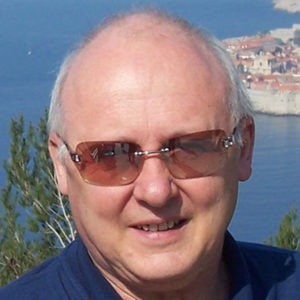
Brian Latchem
Brian Latchem is an English composer who was born in Bath and started to learn the piano at the age of 5. He comes from a musical family with both parents, grandparents, and great grandparents playing a variety of musical instruments. He trained to be a music teacher and started his career in Felixstowe, where he taught Music and Drama to pupils aged 11 to 14. In 1972 he moved to a new school to become responsible for music, teaching children from 5 to 11.
